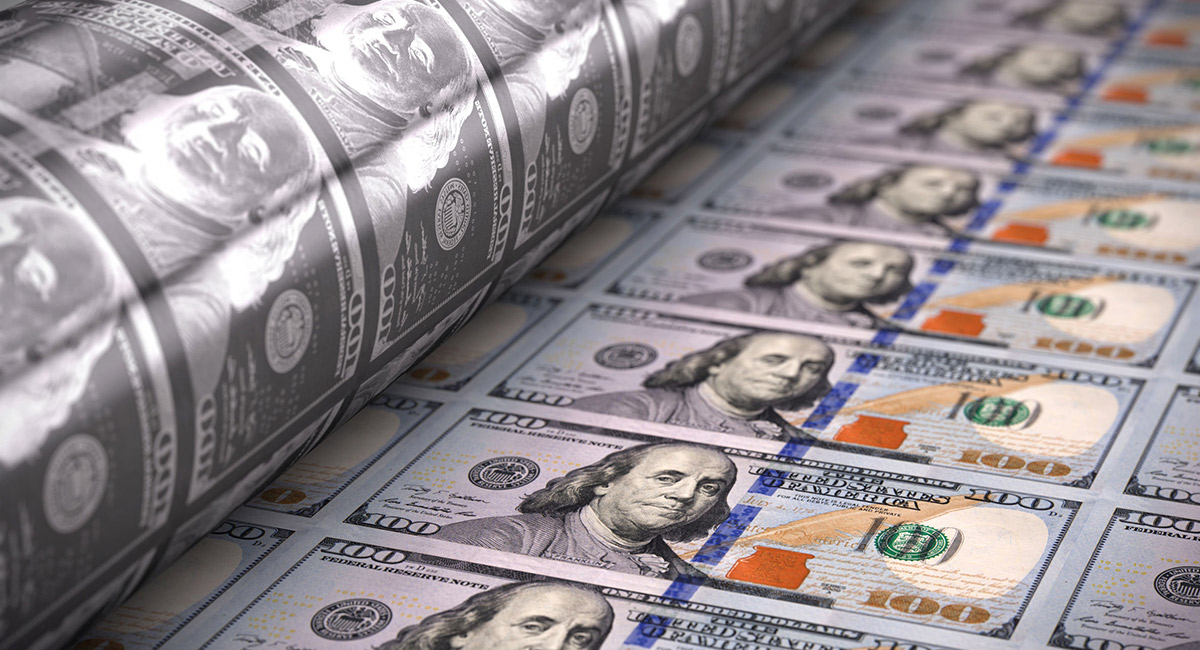How Printing Money Causes Inflation
Understanding the Link Between Printing Money and Inflation - In the complex web of economic theories and systems, one of the prominent discussions revolves around the effects of printing money. Many wonder: can a country simply print more money to solve its financial woes? The answer is not as straightforward, and in many cases, the act can lead to inflation. Let's delve into this intricate relationship to understand it better.
 |
| How Printing Money Causes Inflation |
1. The Basic Principle of Money Supply and Demand
At its core, money is a medium of exchange and a store of value. Its value is determined by its supply in relation to the goods and services available in an economy. When the money supply increases disproportionately to the goods and services, its value decreases, leading to a rise in prices, or inflation.
2. Quantitative Easing and Its Immediate Effects
Quantitative easing (QE) is a strategy adopted by central banks to inject money into an economy, often by buying government bonds. While QE can stimulate an economy in recession, an oversupply of money can decrease its value, especially if the economy doesn't grow proportionately.
3. The Velocity of Money
It's not just about how much money is in circulation, but how quickly it changes hands. If the velocity of money – the rate at which money is exchanged – increases without a corresponding increase in goods and services, it can amplify inflationary pressures.
4. International Implications
When a country prints more money, it can erode international confidence in that currency. If other countries perceive a risk, they might be less inclined to hold or trade in that currency, affecting its exchange rate. A weaker currency can increase the cost of imports, thereby contributing to inflation.
Comparative Insights: Hyperinflation in History
| Area | Predicted Snowfall (inches) |
|---|---|
| Sierra Nevada mountains | Up to 2 feet |
| Central Valley | Up to 6 inches |
| San Francisco Bay Area | 1-3 inches |
| Los Angeles area | 1-2 inches |
| Inland Empire | 1-3 inches |
| Deserts | Less than 1 inch |
These historical instances offer a clear view of how unbridled money printing, combined with other factors, can lead to devastating hyperinflation.
5. The Role of Expectations
Psychology plays a significant role in economics. If people expect prices to rise, they might buy goods now rather than later, further driving up prices. This cycle can feed on itself, creating an inflationary spiral. This is often why central banks aim to manage inflation expectations as much as the inflation itself.
6. The Counterargument: Can We Print Money Without Causing Inflation?
While the general rule of thumb is that printing money can lead to inflation, there are exceptions. For instance, if an economy is underperforming, with unused resources and unemployed workers, injecting money might not necessarily lead to inflation. The extra money can help utilize the dormant resources without causing a disproportionate rise in prices.
7. The Importance of Prudent Monetary Policy
A balance is essential. Central banks worldwide continuously tweak monetary policies to stimulate growth while keeping inflation in check. The right amount of money printing, when timed well and complemented by other economic measures, can bolster an economy. However, unchecked and excessive printing can undoubtedly lead to inflation.
Conclusion
The relationship between money printing and inflation is multifaceted, influenced by various internal and external factors. While the act of printing money can offer short-term economic relief, it's not a silver bullet solution. Without a broader, well-thought-out strategy, it can potentially lead to a vicious cycle of inflation, eroding the purchasing power of individuals and destabilizing economies.